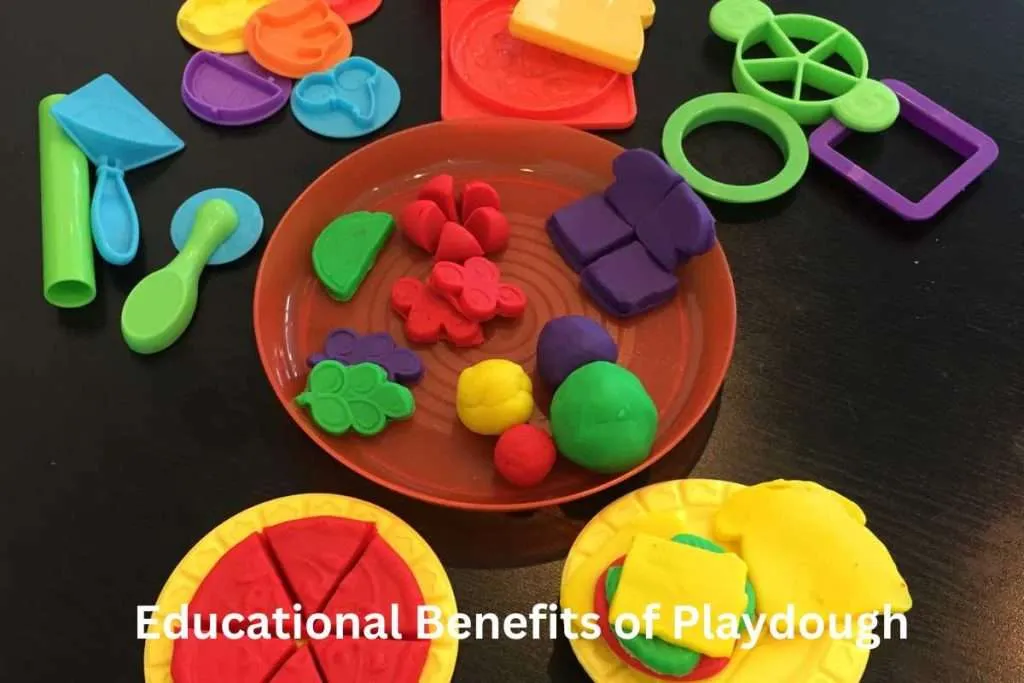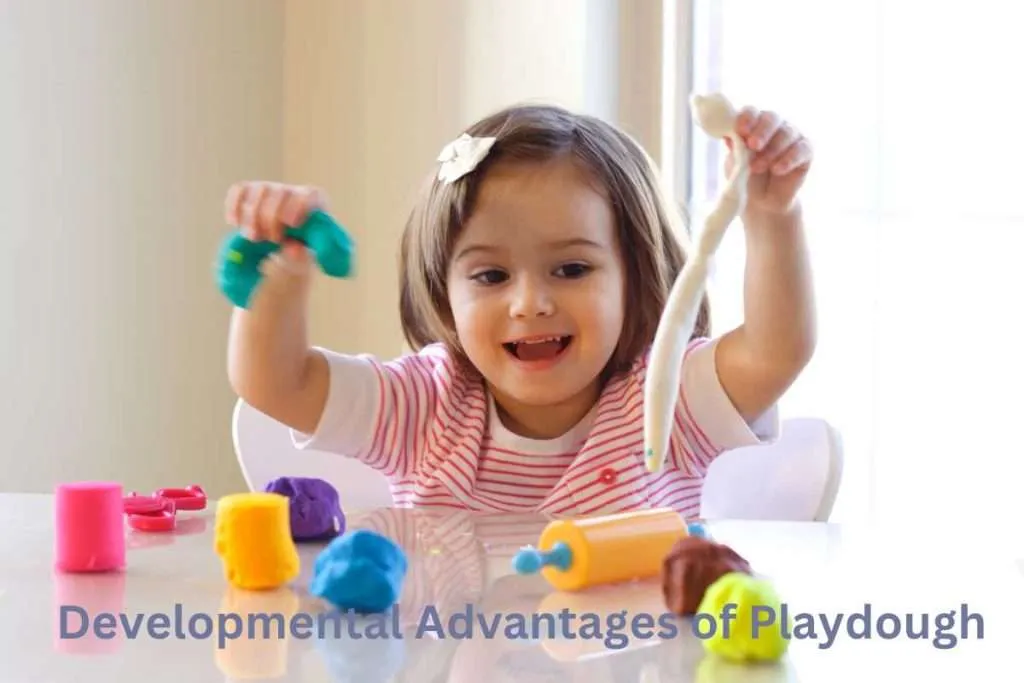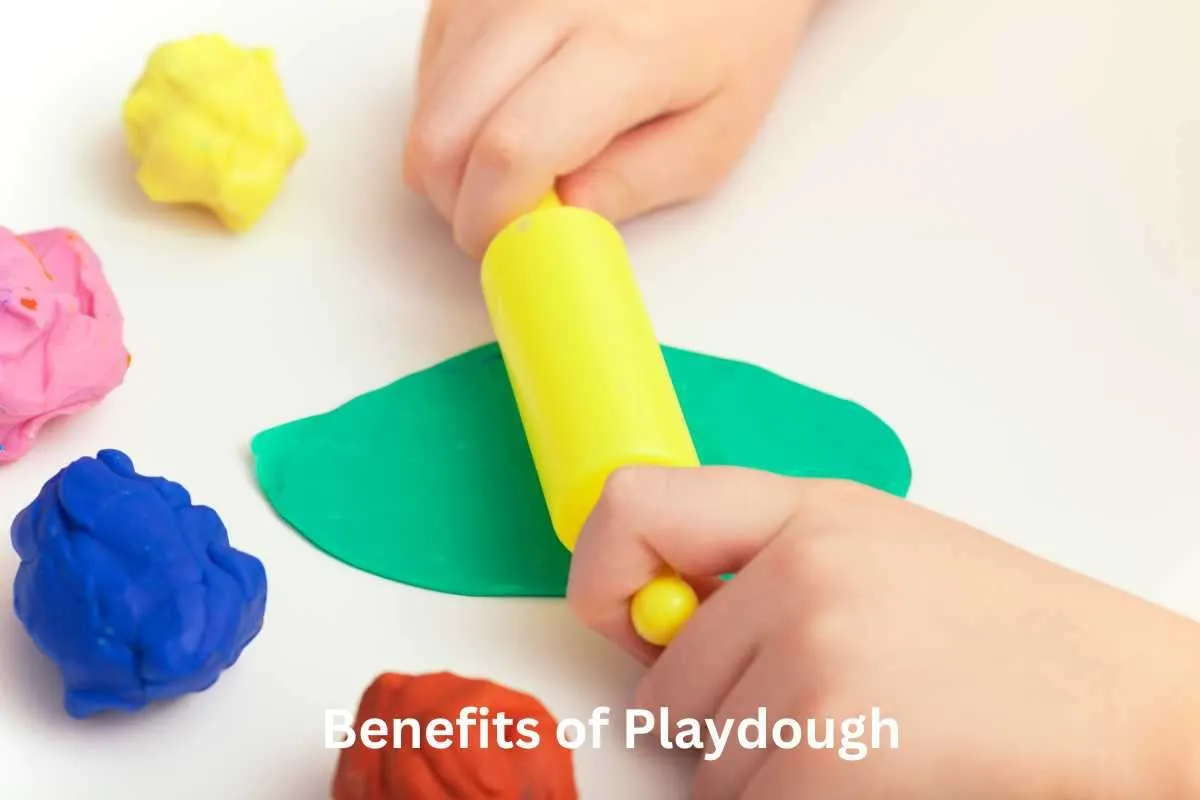Playdough, with its vibrant colors and moldable texture, has been a staple in childhood playrooms for generations. Yet, beyond its tactile appeal and endless possibilities for creation, lies a world of developmental benefits.
From strengthening tiny hand muscles to sparking creativity and enhancing cognitive skills, this simple play material does more than just entertain.
Dive into our exploration of the benefits of playdough play and discover how this classic toy lays the foundation for a myriad of essential life skills, all while ensuring hours of fun.
Key Takeaways
- Playdough provides a sensory experience and helps children develop fine motor skills.
- Playdough activities can teach children about colors, shapes, and basic math concepts.
- Playing with playdough encourages creativity and problem-solving skills.
The Magic of Play dough
Playdough is one of the most magical and versatile toys available for children. It’s a simple, non-toxic, and inexpensive material that can be used in countless ways to promote creativity, imagination, and art. Here are some of the reasons why playdough is so special:
It’s Open-Ended
One of the great things about playdough is that there are no rules or instructions. Children are free to explore and experiment and have play dough fun in any way they like. They can use their hands, tools, or other objects to shape, mold, and manipulate the playdough into whatever they can imagine.
This open-endedness encourages creativity and imagination, and helps children develop their problem-solving skills as they figure out how to make their ideas come to life.
It’s Sensory
Playdough is a sensory experience that engages multiple senses at once. The texture, smell, and color of the playdough all contribute to the overall sensory experience. Children can squish, squeeze, and roll the playdough, feeling its softness and pliability in their hands.
They can also mix colors together to create new shades and experiment with different scents and textures. This sensory play is not only fun but also helps children develop their fine motor skills and hand-eye coordination.
It’s Versatile
Playdough can be used in a variety of ways, making it a versatile toy that can grow with your child. Younger children may enjoy simply squishing and shaping the playdough, while older children can use it to create more complex sculptures, scenes, and even stop-motion animations.
Playdough can also be used as a tool for learning, with children using it to practice letters, numbers, and other concepts.
It’s Collaborative
Playdough is a great toy for social play, as children can work together to create something. They can take turns adding to a sculpture or scene, or work together to make a larger project. This collaborative play helps children develop their social skills, including communication, cooperation, and problem-solving.

Educational Benefits
Playing with playdough provides a wealth of educational benefits for children. Here are some of the ways that playdough can support learning and development:
Literacy and Language Development
Playing with playdough can enhance literacy and language development. When children play with playdough, they can create characters, settings, and stories. This imaginative play can help children develop their vocabulary, storytelling abilities, and language skills.
You can encourage your child to talk about what they are creating and ask them questions about their playdough creations.
Mathematical Learning
Playdough can also support mathematical learning. Children can use playdough to practice counting, sorting, and measuring. You can provide your child with different objects to use with their playdough, such as buttons or beads, and ask them to count or sort them.
You can also encourage your child to create different shapes and sizes of playdough balls and compare their sizes.
Science Exploration
Playing with playdough can also provide opportunities for science exploration. Children can experiment with mixing different colors of playdough together to see what happens or add different textures to their playdough to see how it changes.
You can encourage your child to ask questions about what they observe and help them find answers through experimentation.
Playing with playdough can also support other important skills such as thinking, experimenting, measurement, cause and effect, and symbolic thinking.
By providing your child with different tools and materials to use with their playdough, you can help them develop their math skills, numeracy, and understanding of science concepts. Overall, playdough is a versatile and engaging tool for supporting your child’s learning and development.

Developmental Advantages
Playdough is a fun and engaging activity that provides many developmental advantages for children. Here are some of the ways that playdough can help your child grow and develop.
Fine Motor Skill Development
Playing with playdough can help develop your child’s fine motor skills. Fine motor skills are the small movements of the hands and fingers that are necessary for many everyday tasks, such as writing, drawing, and using utensils.
When children play with playdough, they use their hands and fingers to manipulate the dough, which helps develop the muscles and coordination needed for these tasks helping with their proper finger control. Also using the play dough tools such as the plastic knives, rolling pins and cutters all help in early childhood development.
Emotional and Social Growth
Playdough can also help with emotional and social growth. When children play with playdough, they can express their emotions and ideas through their creations, there is no right or wrong way to play with the dough. This can help them develop their emotional intelligence and communication skills.
Playdough also provides opportunities for children to play together and share their creations, teaching children to develop their social skills and promote cooperation.
Physical Growth
Playdough can also help with physical growth. As children manipulate the dough, they use their whole body, including their arms, shoulders, and hands. This can help develop their gross motor skills and overall physical strength.
Sensory Development
Playdough is a great sensory activity that can help with sensory development. When children play with playdough, they use their senses of touch, sight, and smell. This can help develop their sensory processing skills and promote sensory integration, there are alos plenty of sensory play recipes to help extend the sensory benefits, not just using different food coloring but adding textures in an easy playdough recipe for more sensory playdough play.
Playdough Activities
Playing with playdough is a great way for children to develop their fine motor skills, creativity, and even social skills. Here are some fun and engaging playdough activities that your child can enjoy:
Playing with playdough can help your child develop their ability to create shapes. Encourage them to use their hands to roll the playdough into balls, snakes, and other shapes.You can also provide them with cookie cutters or other shaped objects to press into the playdough. This will help them develop their shape recognition skills.
Using tools with playdough can be a great way for your child to explore different textures and lengths. Provide them with sticks, feathers, twigs, forks, straws, and other utensils to use with the playdough. This hands-on experience will help them develop their eye-hand coordination and fine motor skills.
Nature inspired playdough can be a fun and educational activity for your child. Encourage them to use their imagination to create flowers, trees, and other objects inspired by nature. Y
ou can also provide them with natural materials such as leaves, pebbles, and twigs to incorporate into their playdough creations. This will help them develop their creativity and exploration skills.
Frequently Asked Questions
What are the benefits of playing with Playdough?
Playing with Playdough is a great way for children to develop their creativity, imagination, and fine motor skills. It can also help them to learn about colors, shapes, and textures. Additionally, Playdough can be a great stress reliever for both children and adults, this classic toy has so many benefits!
How does playdough help with a child’s physical development?
Playing with Playdough can help children develop their fine motor skills, hand-eye coordination, and finger dexterity. As they squish, roll, and mold the homemade playdough, they are strengthening the muscles in their hands and fingers, which will help them with tasks like writing and drawing.
What learning outcomes can be achieved through playdough activities?
Playdough activities can help children learn about colors, shapes, and textures. They can also help children develop their language skills as they describe what they are making and talk about their creations with others. Playdough can also be used to teach basic math concepts, such as counting and measuring.
How does playdough aid in cognitive development?
Playing with Playdough can help children develop their problem-solving skills as they figure out how to create different shapes and objects. It can also help them develop their memory and concentration skills as they focus on the task at hand.




